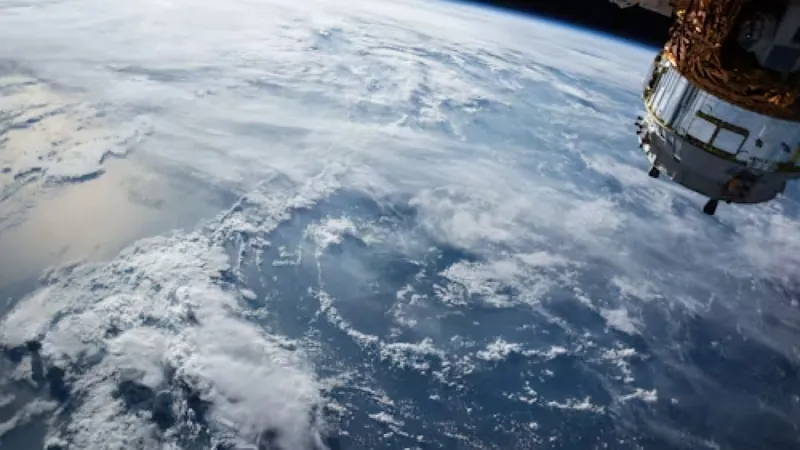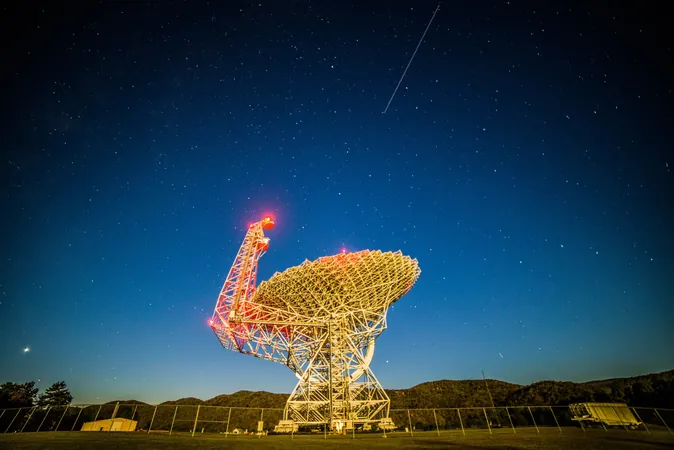
Shocking Discovery: Microplastics Might Be Driving Climate Change!
2024-11-13
Author: Sarah
Shocking Discovery: Microplastics Might Be Driving Climate Change!
A groundbreaking study from scientists at Penn State University has uncovered a startling truth: microplastics suspended in the atmosphere could be influencing Earth’s climate. Published in *Environmental Science and Technology: Air*, the research indicates that these minuscule plastic particles, found everywhere from vacuuming up the ocean depths to the lofty heights of mountainous clouds, could function as ice-nucleating agents within cloud formations. This phenomenon has the potential to disrupt precipitation patterns and weather systems, possibly affecting aviation safety as well.
Microplastics: The Ubiquitous Threat
Microplastics, defined as plastic particles smaller than five millimeters, have been detected worldwide, even in the most isolated and extreme environments. This new study reveals that airborne microplastics are not just present in urban areas but also in pristine regions of the planet, raising alarms about their pervasive presence and influence. According to Professor Miriam Freedman, a senior author and chemistry professor at Penn State, it’s crucial to delve deeper into how these particles interact with our atmosphere to fully comprehend their impacts, particularly in the processes of cloud formation and weather dynamics.
Key Findings on Ice Formation
In a series of laboratory experiments, researchers scrutinized the effects of four types of microplastics—low-density polyethylene (LDPE), polypropylene (PP), polyvinyl chloride (PVC), and polyethylene terephthalate (PET)—on ice formation. Astonishingly, they found that droplets with microplastics froze at temperatures up to 10 degrees warmer than those without! Lead author Heidi Busse, a graduate researcher at Penn State, stated that this discovery indicates that microplastics could actively facilitate cloud ice nucleation even in milder temperatures, leading to a rethink on cloud chemistry.
What This Means for Our Climate
The overarching implications of microplastics on climate have not been thoroughly mapped yet. However, Dr. Freedman notes that the presence of microplastics may significantly alter precipitation patterns by modifying the physical properties of clouds. In regions suffering from heavy microplastic pollution, the dispersal of moisture among these numerous particles could lead to the formation of smaller droplets. This could cause diminished rainfall overall, potentially culminating in heavy downpours when conditions become ideal for coalescence—a perilous combination for both agriculture and urban infrastructure.
Exploring the Chemistry Behind Microplastics
The study also analyzed how environmental aging—exposure to sunlight and atmospheric chemicals—affects the ice-forming behavior of microplastics. Notably, aged PVC was found to have increased abilities to nucleate ice, pointing to a complex interplay between the environment and microplastic behavior. Future research aims to explore the impact of various additives in plastics, which may further elucidate their role in our changing climate.
As the evidence mounts about the unexpected roles microplastics play in our environment, it’s evident that our understanding of climate change needs to evolve. Stay tuned as more revelations surface about this ubiquitous pollutant that could be altering our climate forever!



 Brasil (PT)
Brasil (PT)
 Canada (EN)
Canada (EN)
 Chile (ES)
Chile (ES)
 España (ES)
España (ES)
 France (FR)
France (FR)
 Hong Kong (EN)
Hong Kong (EN)
 Italia (IT)
Italia (IT)
 日本 (JA)
日本 (JA)
 Magyarország (HU)
Magyarország (HU)
 Norge (NO)
Norge (NO)
 Polska (PL)
Polska (PL)
 Schweiz (DE)
Schweiz (DE)
 Singapore (EN)
Singapore (EN)
 Sverige (SV)
Sverige (SV)
 Suomi (FI)
Suomi (FI)
 Türkiye (TR)
Türkiye (TR)